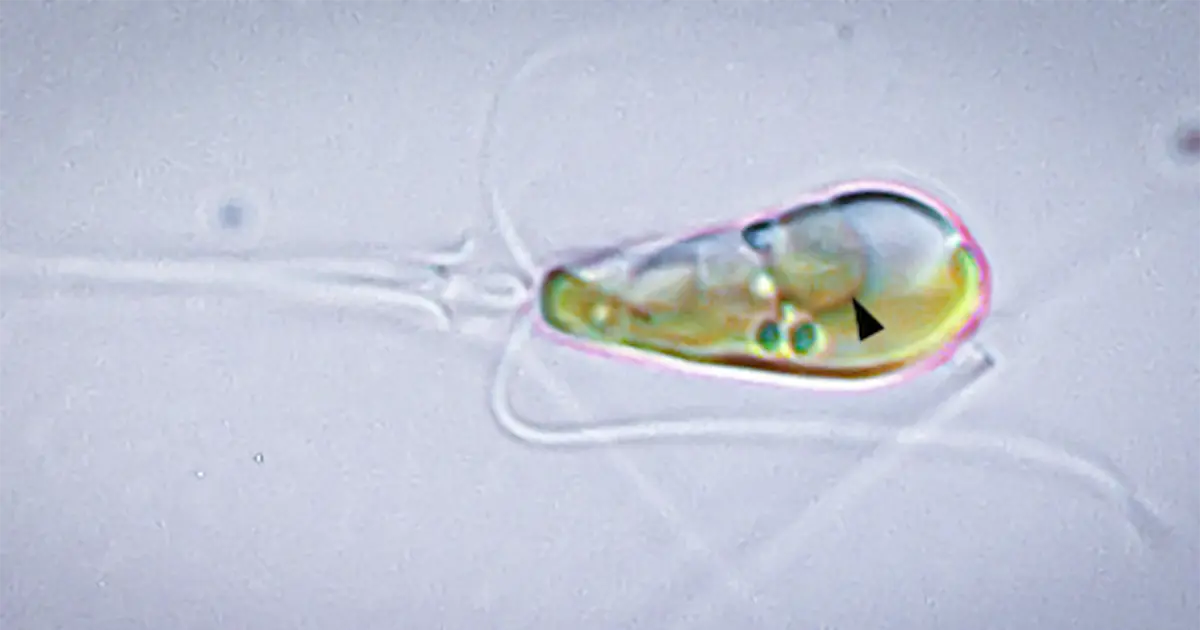Two lifeforms merge in once-in-a-billion-years evolutionary event (Last time this happened, Earth got plants)
Two lifeforms merge in once-in-a-billion-years evolutionary event (Last time this happened, Earth got plants)

Two lifeforms merge in once-in-a-billion-years evolutionary event

From the article:
Scientists have caught a once-in-a-billion-years evolutionary event in progress, as two lifeforms have merged into one organism that boasts abilities its peers would envy. Last time this happened (1.6 billion years ago), certain advanced cells absorbed a type of bacteria that could harvest energy from sunlight. These became organelles called chloroplasts, which gave sunlight-harvesting abilities, as well as a fetching green color, to a group of lifeforms you might have heard of – plants.
And now, scientists have discovered that it’s happening again. A species of algae called Braarudosphaera bigelowii was found to have engulfed a cyanobacterium that lets them do something that algae, and plants in general, can’t normally do – "fixing" nitrogen straight from the air, and combining it with other elements to create more useful compounds.

Born too late to explore the world. Born too soon to explore the stars. Born just in time for Algae 2.0 to drop.
And what a feature drop it was. Right? Or was it? Not sure what "fixing" nitrogen is helpful for...
As any farmer or gardener will tell you, nitrogen is critical for plant growth, and for most plants it's obtained via the soil. Soil nitrogen can be depleted if not replenished (in an agricultural context, by compost or fertilizer), but there's plentiful nitrogen in the atmosphere (which is mostly nitrogen, actually) so any plant that has nitrogen fixing abilities has constant access to this critical nutrient. There currently exist nitrogen-fixing plants (peas and clover for example), but they don't actually do it on their own, they rely on a symbiotic relationship with bacteria.
Nitrogen is crucial for duplicating DNA, which needs to happen for vells to divide. Despite being over 70% of the atmosphere, nitrogen gas is incredibly inert, so most organisms cant use it for any metabolic purposes. There are many bacteria that are able to break down nitrogen gas into useable nitrates, most famously those that live in the root systems of legimes like soy and peanuts, which is why American corn farmers grow so much soy.
Fertiliser is one option.
The ocean is only marginally explored.
Make the most of it I guess?
Man, it's easier, and way cheaper, to explore the world today than it ever has been before.